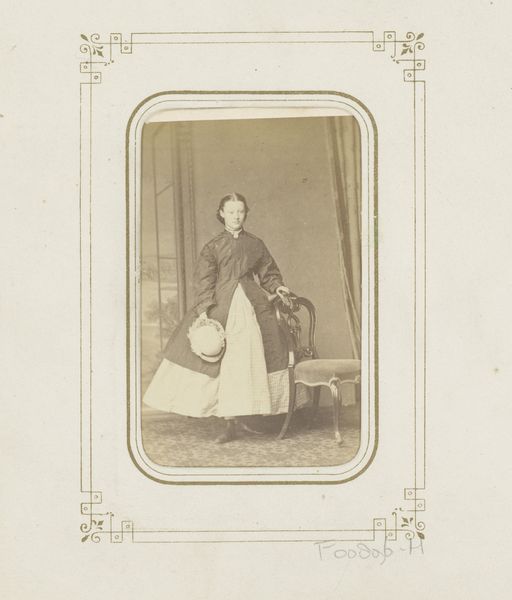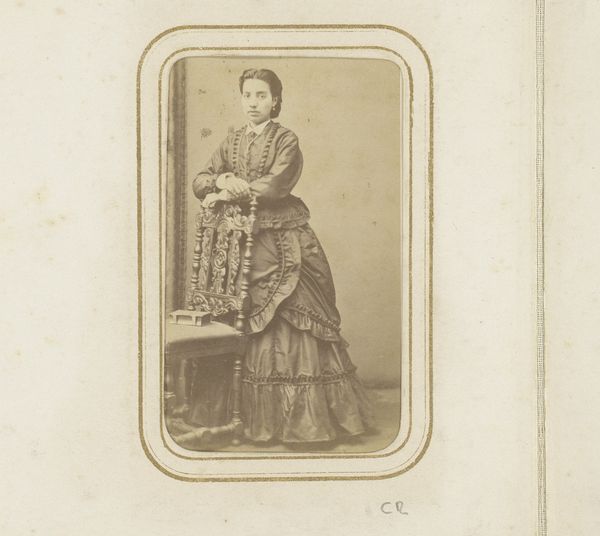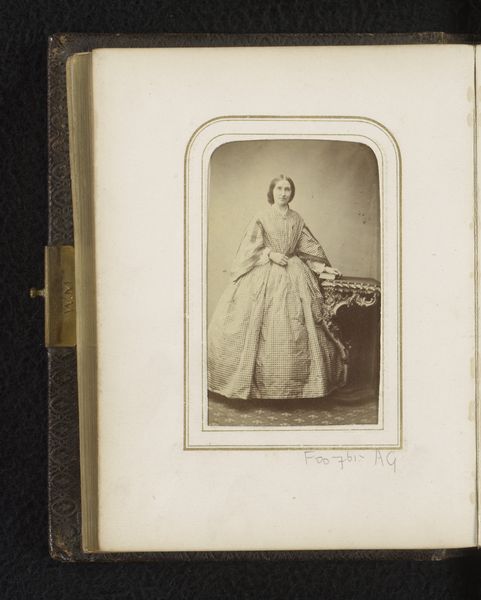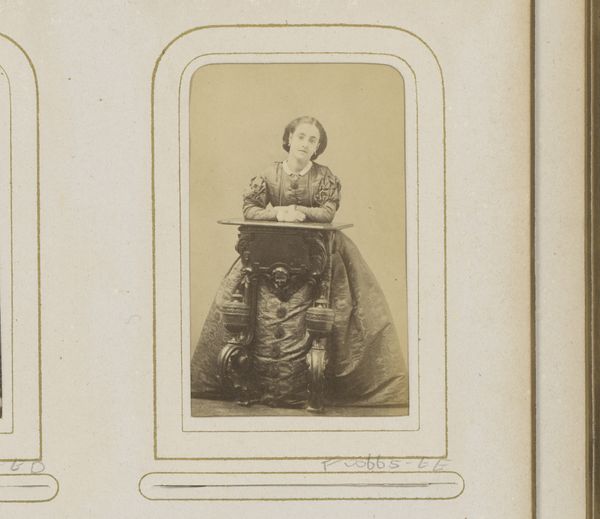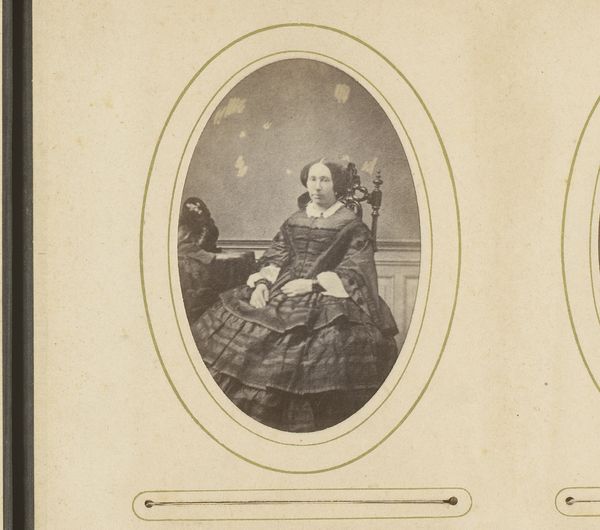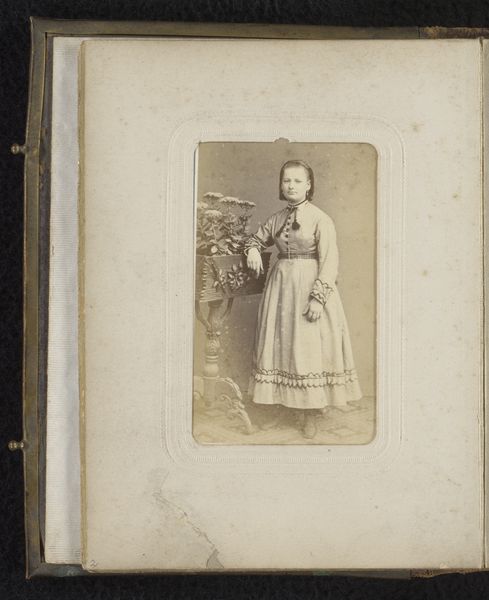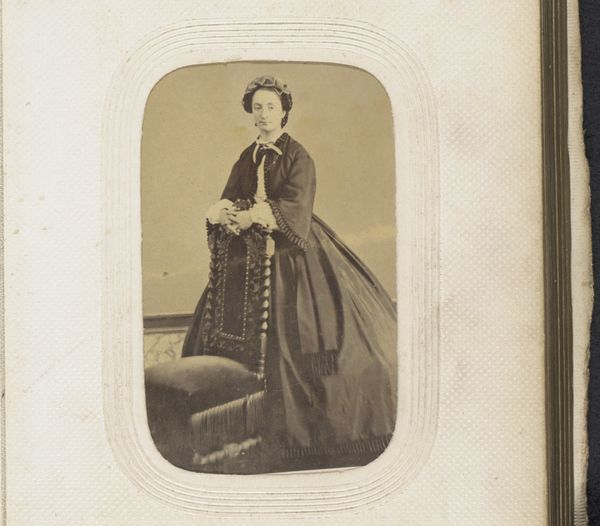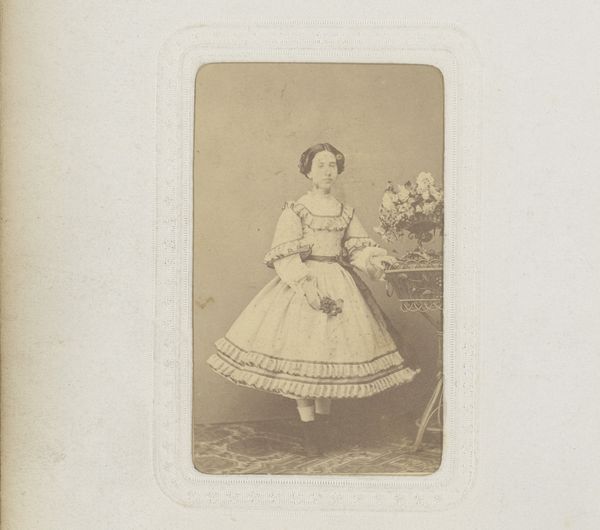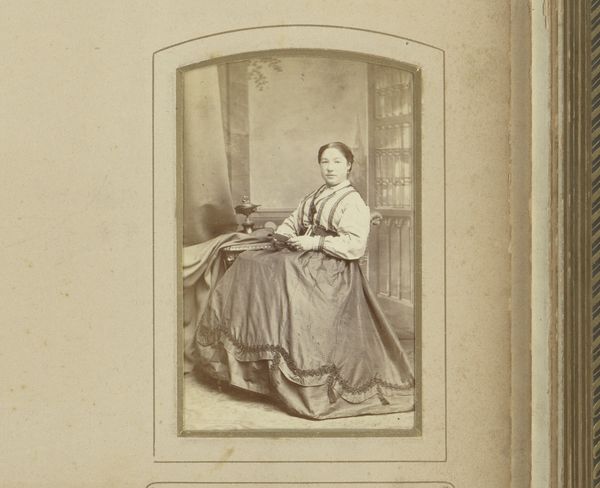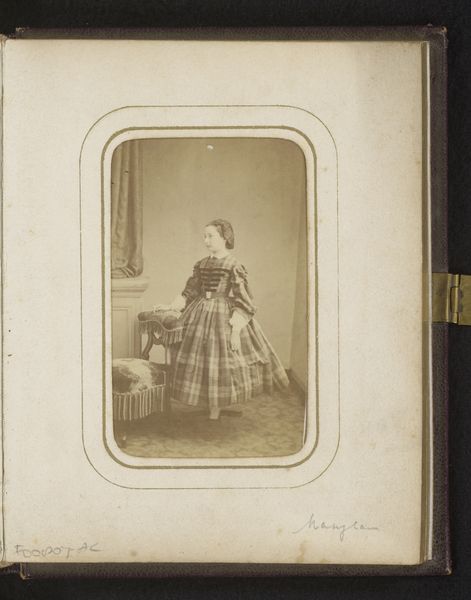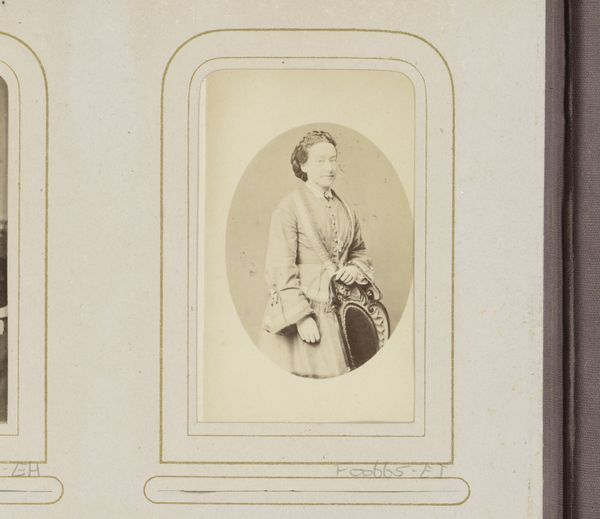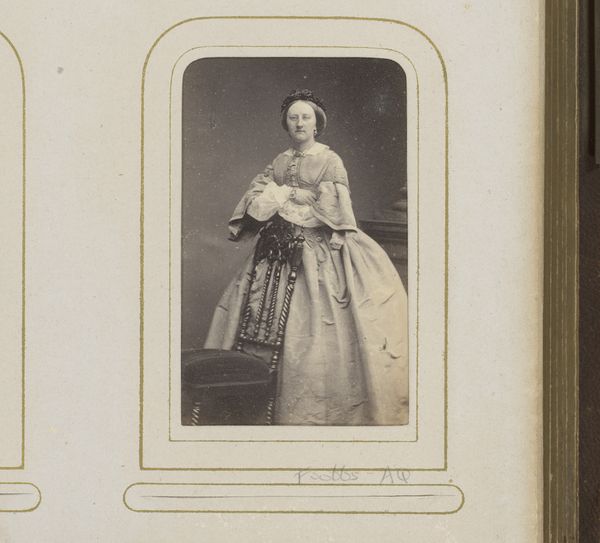
photography, albumen-print
#
portrait
#
photography
#
19th century
#
albumen-print
Dimensions: height 85 mm, width 52 mm
Copyright: Rijks Museum: Open Domain
Curator: Looking at this photograph, there's a feeling of quiet dignity, almost solemnity. Editor: Indeed. What we have here is "Portret van een meisje, staand bij een stoel," a portrait of a girl standing by a chair, captured sometime between 1860 and 1894. It's an albumen print from the studio of Ghémar Frères, now residing here at the Rijksmuseum. Curator: The starkness of the pose is arresting, the composition tightly frames her within what I can only call a box, hinting at the confined roles for women in that era. It almost feels like a commentary on societal expectations imposed on young women of the time. Editor: Absolutely. Photography in this period was also highly performative. Consider the relatively long exposure times and how studios and families would prepare to make formal photographs. We see this in the girl’s composed stance, typical of studio portraiture intended for circulation as carte-de-visite, thus extending networks of acquaintance, kinship and political allegiance. Curator: Yes, that dress…with those striking geometric shapes, but the dress almost feels like a uniform; while meant to demonstrate a particular status or access, it can hardly be described as liberating or even creative. Is it intended to draw us in, or to reinforce distance? The artist's intention is an intriguing question given the history and agency associated with the female subject in such portraits. Editor: We need to also consider that studios like Ghémar Frères helped establish standards of representation. The democratization of portraiture facilitated by photography shaped social imaginaries in distinct ways that had an influence on politics. What images circulate, and whose images they are, is not just a question of representation but power. Curator: This makes me think of contemporary performance art, where the artist stages themselves to question identities within societal expectations. In some ways, this photograph does something similar, prefiguring a discourse around how identity is performed. Editor: Right. The girl depicted here and her family would have participated in complex conversations about how to display themselves to the world. It's through those social codes that photographic portraiture became a tool of nation building as much as one of artistic expression. Curator: This photo certainly speaks volumes about more than just an individual. Editor: A potent reminder that even what seems like a simple portrait holds a reflection of its complex times.
Comments
No comments
Be the first to comment and join the conversation on the ultimate creative platform.
